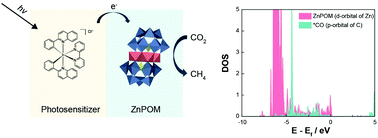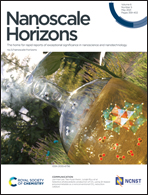Selective photocatalytic production of CH4 using Zn-based polyoxometalate as a nonconventional CO2 reduction catalyst†
Abstract
Efficient and selective production of CH4 through the CO2 reduction reaction (CO2RR) is a challenging task due to the high amount of energy consumption and various reaction pathways. Here, we report the synthesis of Zn-based polyoxometalate (ZnPOM) and its application in the photocatalytic CO2RR. Unlike conventional Zn-based catalysts that produce CO, ZnPOM can selectively catalyze the production of CH4 in the presence of an Ir-based photosensitizer (TIr3) through the photocatalytic CO2RR. Photophysical and computation analyses suggest that selective photocatalytic production of CH4 using ZnPOM and TIr3 can be attributed to (1) the exceptionally fast transfer of photogenerated electrons from TIr3 to ZnPOM through the strong molecular interactions between them and (2) effective transfer of electrons from ZnPOM to *CO intermediates due to significant hybridization of their molecular orbitals. This study provides insights into the design of novel CO2RR catalysts for CH4 production beyond the limitations in conventional studies that focus on Cu-based materials.

- This article is part of the themed collections: Nanoscale Horizons 2022 Lunar New Year Collection and Horizons Community Board Collection: Solar Energy Conversion


 Please wait while we load your content...
Please wait while we load your content...